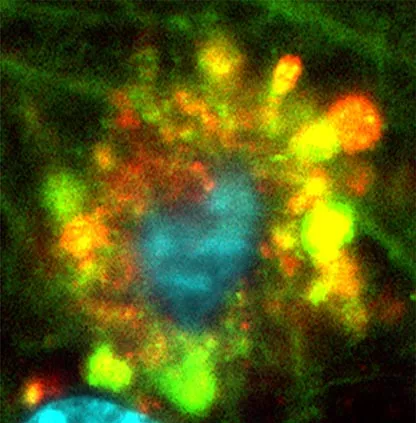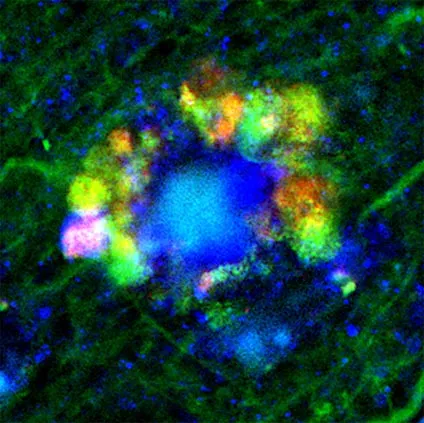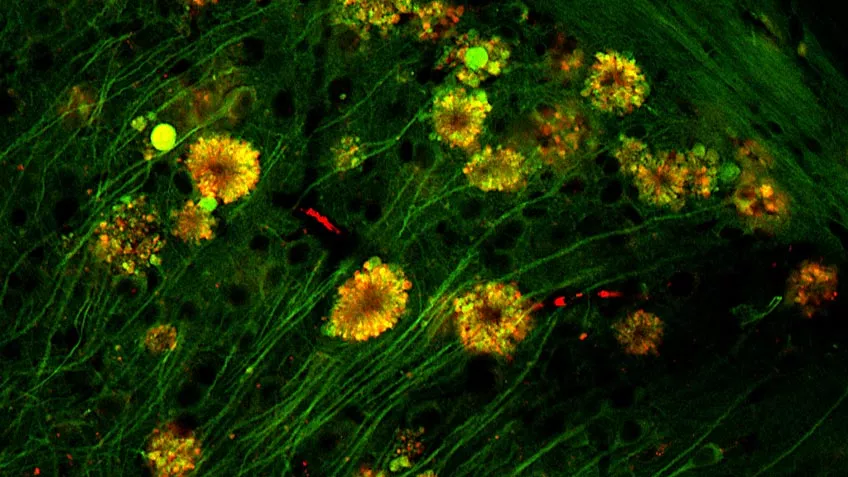According to the data of the National Institute on aging, Alzheimer's disease is the most common cause of dementia in the elderly and the seventh leading cause of death in the United States. It is a debilitating progressive disease that slowly destroys cognitive function and memory. The amyloid cascade hypothesis is a major theory about how Alzheimer's disease forms.
Now, the new research results point to a new direction. A new study in mice shows that brain cells have failed before the accumulation of debris filled plaques in Alzheimer's disease.
It has been considered in this field for decades that this protein containing amyloid β The extracellular accumulation of plaques is a critical first step towards the brain damage observed in Alzheimer's disease. The new study, led by researchers at the Grossman School of medicine at New York University and the Nathan Klein Institute, challenges this view, the so-called amyloid cascade hypothesis.
On the contrary, the latest research results suggest that the neuron damage specific to Alzheimer's disease takes root in cells, and long before these linear amyloid plaques are completely formed and coagulated in the brain.

The study was published as a cover article in nature neuroscience on June 2. The study traced the root dysfunction of Alzheimer's disease observed in mice to the lysosome of brain cells. These are small sacs within each cell, which are filled with acid enzymes. In addition, they are also involved in daily cell reactions and the routine decomposition, removal and recycling of metabolic wastes generated by diseases. The researchers pointed out that lysosomes are also the key to decompose and process the cell's own parts during natural cell death.
As part of the study, the researchers tracked acid activity in the lysosomes of intact mice and found a decrease because the cells were injured in the disease. Imaging tests developed by the langney health center of New York University and nahan Kline showed that lysosomes of some brain cells became larger because they fused with so-called autophagic vacuoles, which were full of waste that could not be decomposed. These autophagic vacuoles also contain early forms of amyloid β。

In the most severely damaged neurons, which are destined to die early, vacuoles gather together in a "flower like" pattern, protrude from the outer membrane of the cells and gather around the center or nucleus of each cell. Amyloid β The accumulation of is to form filaments in cells, which is another sign of Alzheimer's disease. In fact, researchers observed almost completely formed plaques in some damaged neurons.
"Our findings are the first to attribute the neuronal damage observed in Alzheimer's disease to problems within the lysosome of brain cells, where amyloid β First, "said Dr. Ju Hyun Lee, the chief investigator of the study." previously, the working hypothesis mostly attributed the damage observed in Alzheimer's disease to the accumulation of amyloid protein outside the brain cells, rather than before and from inside the neurons. "

Researcher Ralph Nixon pointed out: "this new evidence has changed our basic understanding of how Alzheimer's disease progresses; it also explains why so many experimental therapies aimed at removing amyloid plaques have failed to stop the progress of the disease, because brain cells are incomplete before the plaques are completely formed outside the cells."
"Our research suggests that future treatments should focus on reversing lysosomal dysfunction and rebalancing acid levels in brain neurons," said Nixon, a professor in the Department of psychiatry and cell biology at New York University langney and director of the Nathan Klein Alzheimer's disease research center
The researchers point out that they have been studying experimental therapies to treat lysosomal problems observed in their research.
It is reported that a recent study by the langney team of New York University (published in science advances in April) attributed one cause of the problem of cell waste treatment to a gene named PSEN1. The gene has long been thought to be the cause of Alzheimer's disease, but its other role in causing the disease has not become clear until now.
In addition, their recent work also showed that neuronal damage in PSEN1 mouse model of Alzheimer's disease can be reversed by restoring the appropriate acid content in lysosomes.
This work falls within the scope of U.S. patent 9265735, which relates to Alzheimer's disease therapy based on reversing lysosomal deacidification (the root cause of waste accumulation). The terms and conditions of the patent are being regulated in accordance with health system policies.
According to the data of the National Institute on aging, more than 6million Americans, most of whom are 65 years old or older, suffer from dementia, that is, the gradual loss of thinking, memory and reasoning ability caused by Alzheimer's disease.